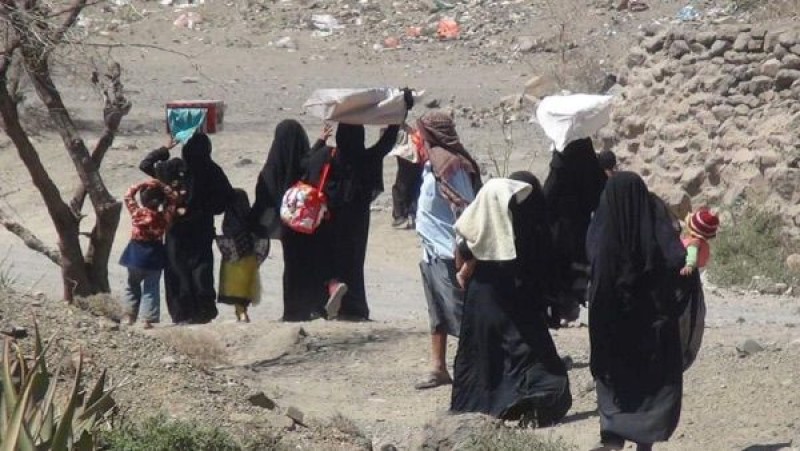Yemen : Number of African migrants decreased by 63%


Rate of flow of migrants from the Horn of Africa to Yemen declined last month by 63 percent, according to the latest data distributed by the International Organization for Migration, while the Yemeni Ministry of Interior announced the formation of a national committee to develop foundations and a strategy for dealing with immigration and migrants issues.
The Displacement Tracking Matrix of the International Organization for Migration reported that Yemen received 1,551 migrants last September, a decrease of 63 percent from last month, with the total number of arrivals reaching 4,176 people.
In parallel, the number of migrants entering Yemen through the coast of Lahj Governorate decreased by 76 percent compared to last month, as 548 migrants arrived compared to 2,249 migrants who arrived during the month of August.
The International Organization for Migration attributed this significant and noticeable decline since August to the ongoing joint security campaign by the Yemeni forces that the government has been implementing for two months.
Security measures
Yemeni security measures - according to the United Nations - included raiding smugglers' property and arresting some of those who helped in the process of transporting migrants from Ethiopia, in addition to deploying military points on the coastal strip to pursue smugglers' boats.
The organization confirmed that this campaign is continuing so far in Lahj Governorate, which was receiving large numbers of migrants arriving from Djibouti on the other side of the Red Sea.
The organization found in its report that the ongoing security campaign affected the access points for moving from Lahj to Taiz Governorate, as the Displacement Tracking Matrix team is trying to develop the work of field researchers at the new access points.
She explained that the number of migrants entering through Shabwa Governorate also decreased, but by 48 percent during the month of September, to 1,003 migrants, compared to 1,927 migrants who arrived through the coast of this governorate in August, and attributed the reasons for this to changes in weather conditions, specifically the sea tide. And wind speed.
According to International Migration, movements resulting from the conflict accounted for 50 percent of all incoming migration movement during the month of September, and it said that it observed this exclusively in Shabwa Governorate, where the source of the migrants was the port of Bari in Somalia.
The organization explained that their percentage was distributed among 21 percent of children, 19 percent of women, and 60 percent of men, and stated that the humanitarian crisis in Yemen and the challenges of reaching the Gulf countries led to the return of many migrants to the Horn of Africa.
During the past month, the IOM DTM team in Djibouti recorded the return of 559 migrants (498 males and 61 females) from Yemen, where they embarked on a dangerous journey back to their homeland on a boat. In addition, the IOM DTM received a detailed report on... The return of 76 migrants (including 74 Ethiopians and two Somalis) who had initially traveled from Yemen to Oman but were eventually deported to Yemen.
Government committee
In a context related to the situation of migrants, the Yemeni Minister of the Interior, Major General Ibrahim Haidan, discussed with the acting head of the International Organization for Migration mission, Mart Huber, immigration issues and ways to address them. The minister reviewed the problems facing Yemen as a result of the influx of thousands of illegal immigrants.
Haidan revealed that, based on the directives of the Chairman of the Presidential Leadership Council, a supreme national committee was recently formed to develop policies and strategies related to immigration and immigrant issues.
The official media quoted Minister Haidan as confirming that migrants from the countries of the Horn of Africa are receiving humane treatment from the people and the government despite the difficult circumstances that Yemen is going through. He pointed out the exploitation that migrants are exposed to by the Houthis, whether by throwing them into battles or through harsh treatment. which they receive from them.
The Yemeni Minister of Interior described the holocaust to which African migrants were subjected at the hands of the Houthis as “a crime against humanity and those involved in it must be tried,” and praised the efforts made by the International Organization for Migration to alleviate the suffering of migrants.

Sana’a – The International Organization for Migration (IOM) announced that more than 24,000 people have been displaced across Yemen sin…

Aden — The International Organization for Migration (IOM) reported that more than 24,000 people have been internally displaced in Yemen since…

MARIB — Security sources reported that police in Marib governorate have opened investigations into two separate suicide incidents that occurr…